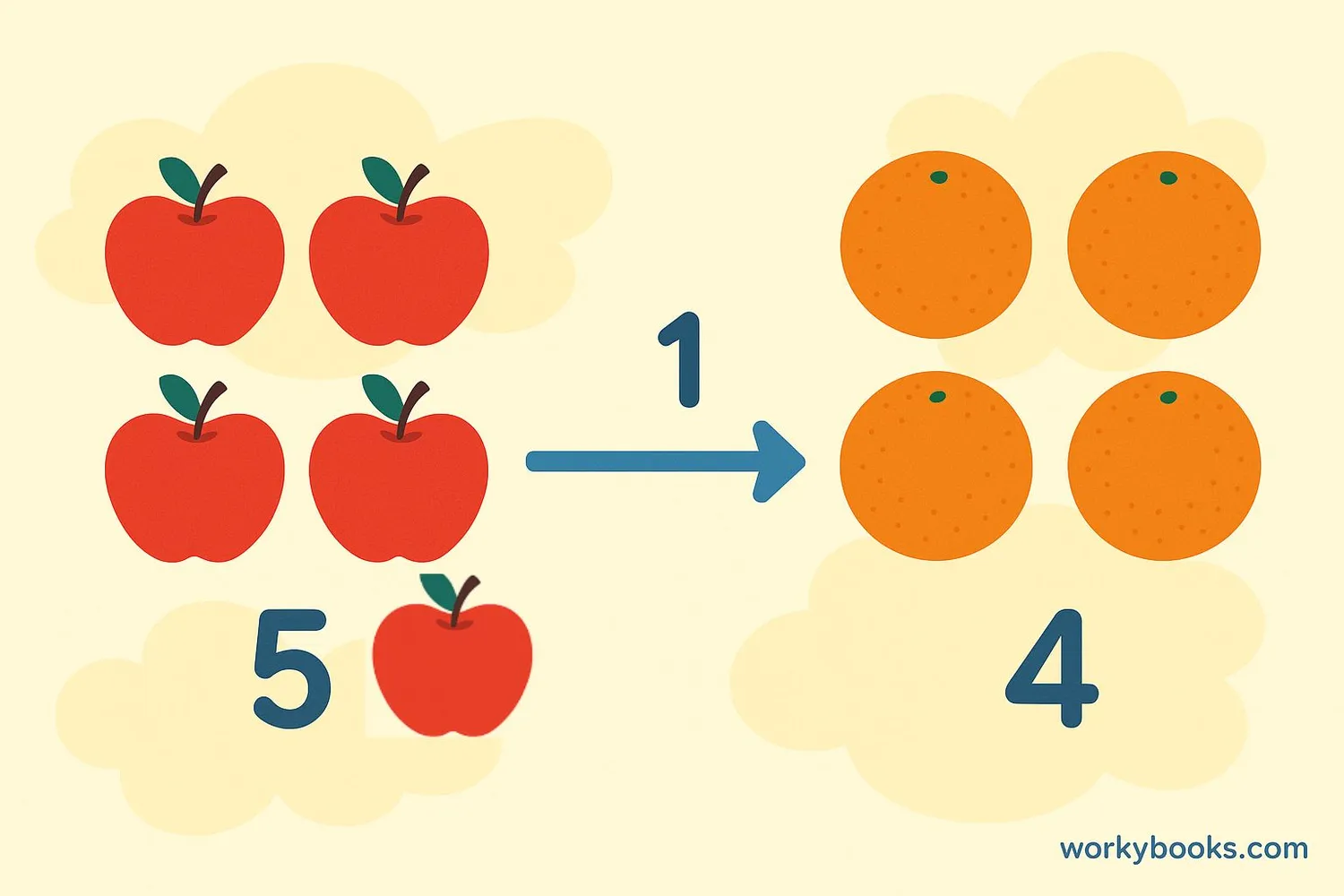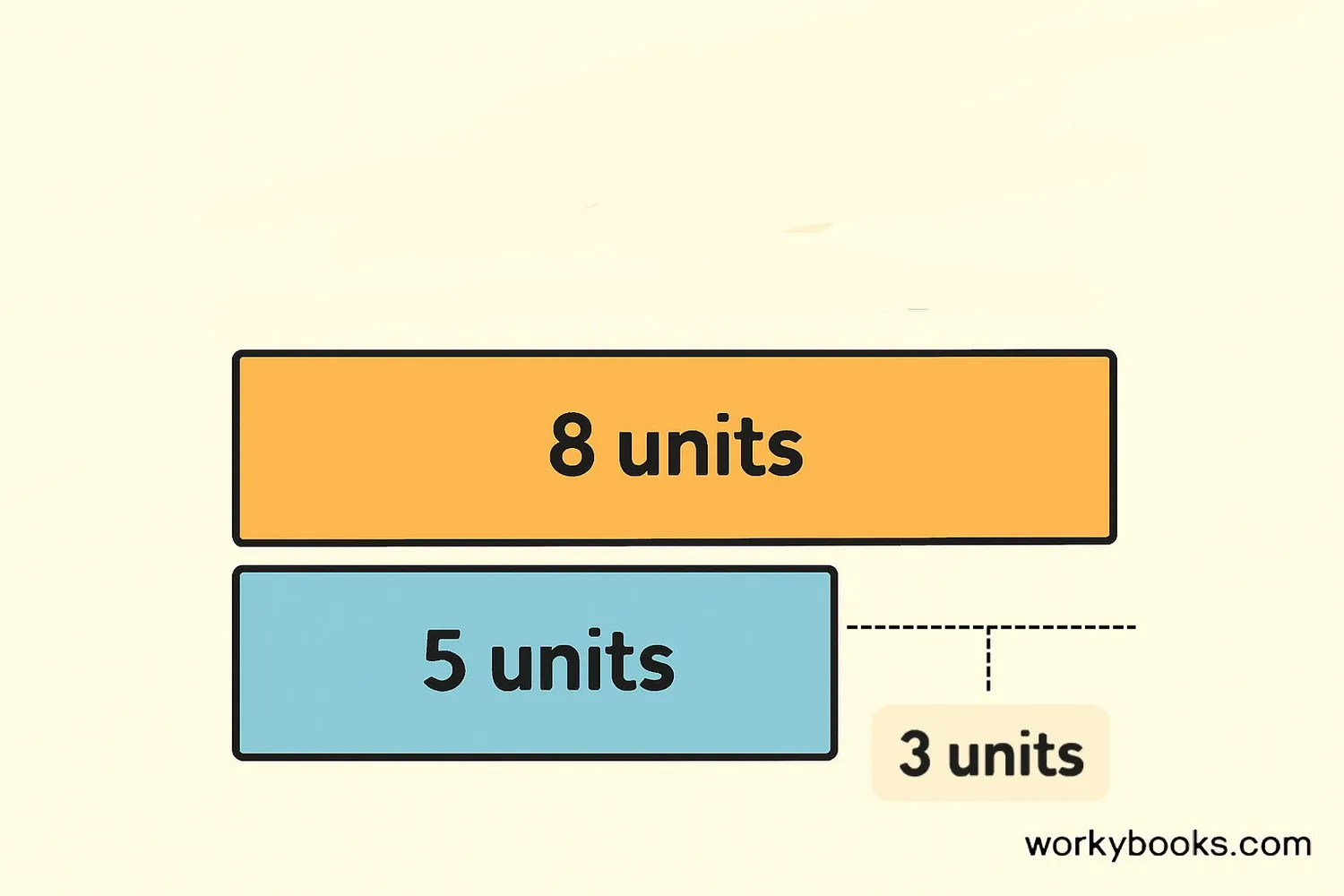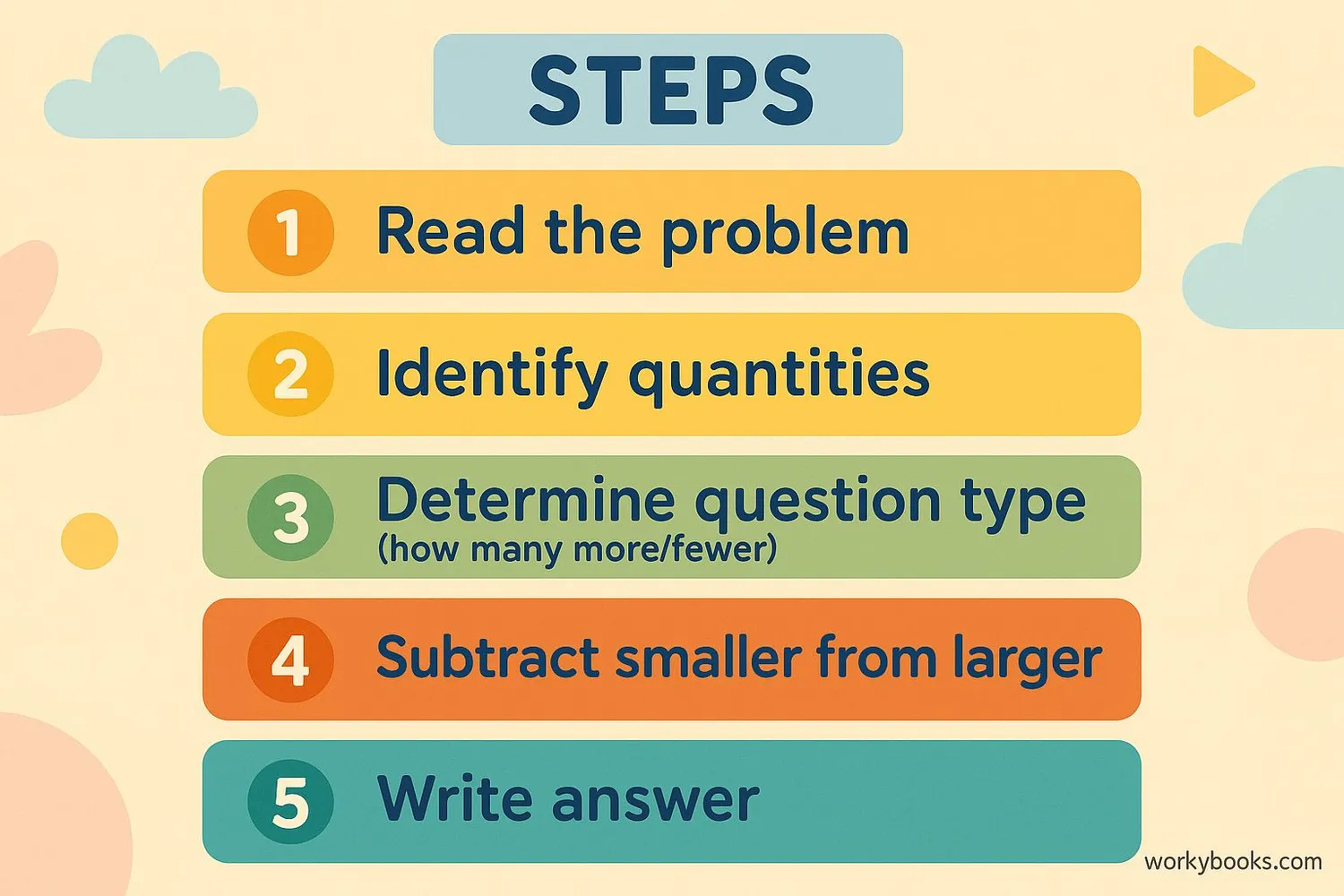Additive Comparison - Definition, Examples, Quiz, FAQ, Trivia
Learn to compare quantities using addition and subtraction with easy explanations and practice activities
What is Additive Comparison?

Additive comparison is a math concept where we compare two quantities by finding the difference between them. We ask questions like "how many more?" or "how many less?" to understand the relationship between two numbers.
Instead of just saying which is bigger or smaller, additive comparison tells us exactly how much more or exactly how much less one quantity is compared to another. This helps us understand the relationship between numbers in a more precise way.
For example: "Sarah has 7 pencils. Tom has 4 pencils. How many more pencils does Sarah have than Tom?" To find the difference, we subtract: 7 - 4 = 3. Sarah has 3 more pencils than Tom.
Key Concept
Additive comparison focuses on the difference between two quantities, which we find by subtracting the smaller number from the larger number.
Understanding Additive Comparison

There are two main types of additive comparison questions:
1. How many more? - When we want to know how much larger one quantity is compared to another.
2. How many fewer/less? - When we want to know how much smaller one quantity is compared to another.
Both questions are asking for the same thing: the difference between the two numbers. We find this difference by subtracting the smaller number from the larger number.
Here's how it works:
• "How many more does A have than B?" → A - B
• "How many fewer does B have than A?" → A - B
Notice that both questions result in the same calculation! The only difference is how we phrase the question.
Remember
"How many more" and "how many fewer" both require finding the difference between two quantities through subtraction.
Solving Additive Comparison Problems

Solving additive comparison problems is easy when you follow these steps:
Step 1: Read the problem carefully. Identify the two quantities being compared.
Step 2: Determine what the question is asking: "how many more" or "how many fewer/less"?
Step 3: Identify which quantity is larger and which is smaller.
Step 4: Subtract the smaller quantity from the larger quantity to find the difference.
Step 5: Write your answer in a complete sentence.
Let's practice with an example:
Problem: Maria has 15 stickers. David has 9 stickers. How many more stickers does Maria have than David?
Solution:
• Step 1: Quantities are 15 (Maria) and 9 (David)
• Step 2: Question is "how many more"
• Step 3: 15 is larger than 9
• Step 4: 15 - 9 = 6
• Step 5: Maria has 6 more stickers than David.
Problem-Solving Tip
Drawing a picture or using blocks can help visualize the problem when you're getting started with additive comparison.
Examples of Additive Comparison

Let's look at some examples of additive comparison problems:
Example 1
There are 12 birds in a tree. There are 7 birds on the ground. How many more birds are in the tree than on the ground?
Example 2
Emma has 20 crayons. James has 14 crayons. How many fewer crayons does James have?
Example 3
A library has 65 picture books and 38 chapter books. How many more picture books are there than chapter books?
Example 4
In a class, 18 students like pizza and 9 students like hamburgers. How many more students like pizza?
Practice Tip
Create your own additive comparison problems using objects around you - compare the number of windows in different rooms, books on different shelves, or toys in different boxes!
Additive Comparison Quiz
Test your understanding with this 5-question quiz. Choose the correct answer for each question.
Frequently Asked Questions
Here are answers to common questions about additive comparison:
Math Trivia
Discover interesting facts about math and comparison:
Ancient Comparisons
The concept of comparison dates back to ancient civilizations. The Egyptians used comparison in their construction projects, while Babylonian merchants used it for trading goods over 4,000 years ago.
Math in Nature
Animals use additive comparison instinctively! Squirrels compare quantities of nuts when storing food for winter, and birds compare numbers of twigs when building nests.
Math in Space
Astronauts use additive comparison when calculating supplies for space missions. They compare how much food, water, and oxygen they have versus how much they'll need for their journey.
World's Largest Comparison
The largest math comparison event had 5,327 students simultaneously solving comparison problems in a stadium in China, setting a world record for the largest math lesson!





